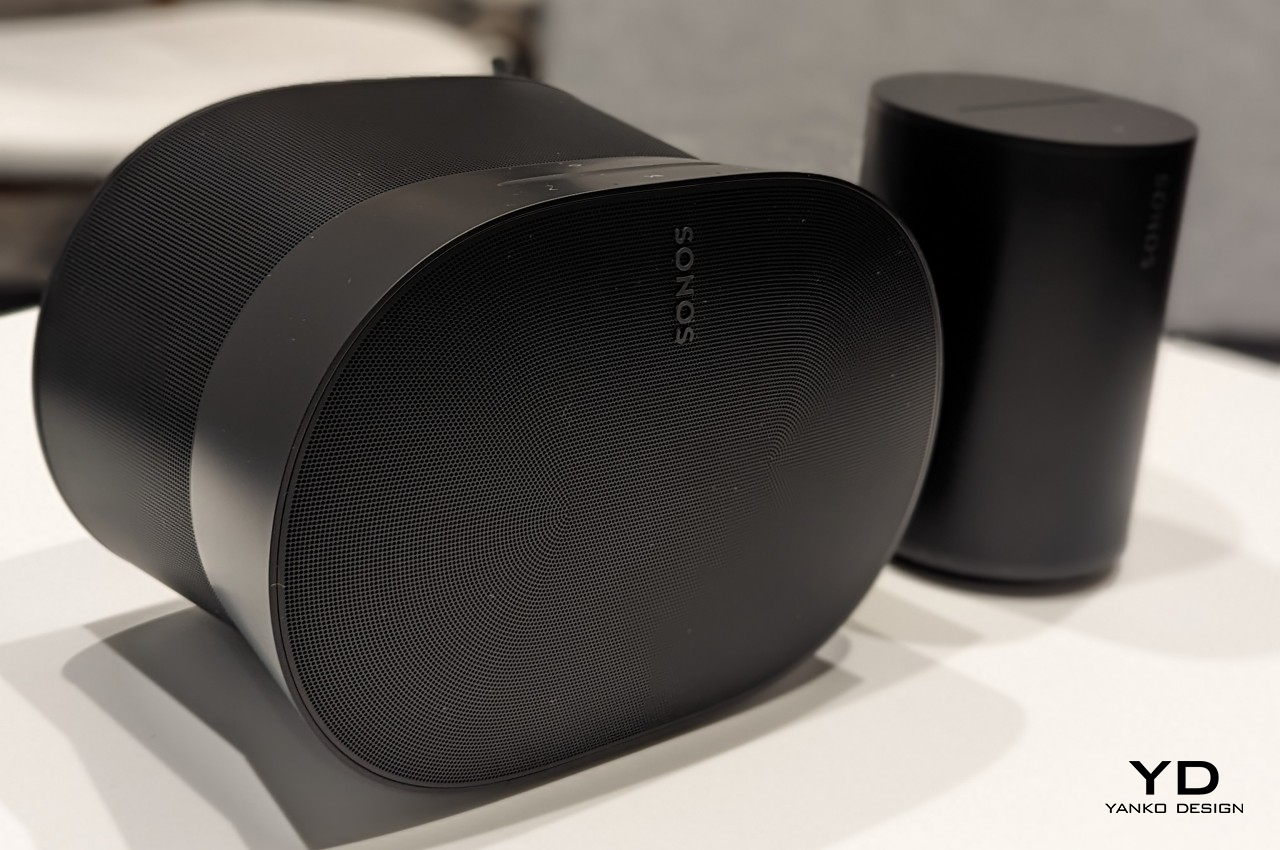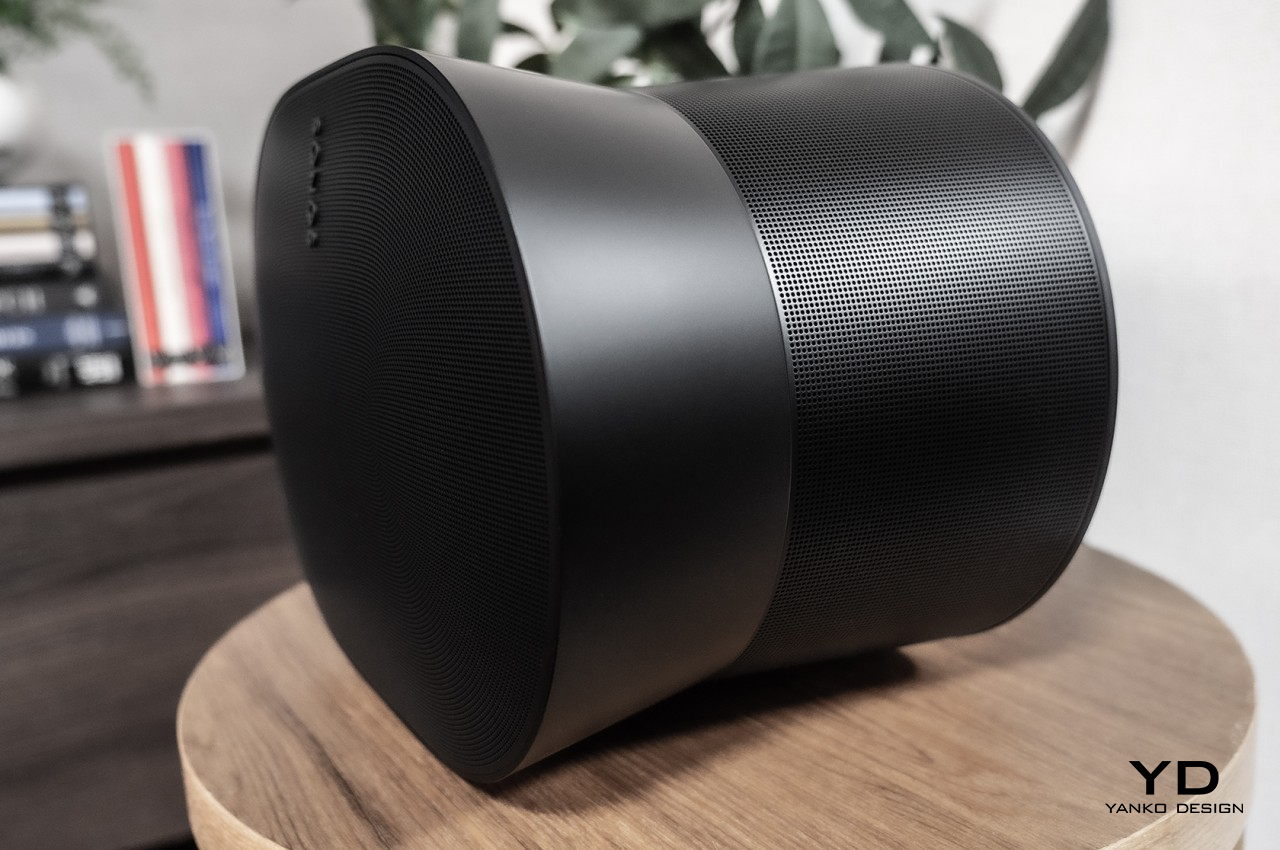
PROS:
- Strong sustainability efforts
- Excellent sound quality
- Distinctive design
- Easy to setup and use
CONS:
- Inconsistent spatial audio performance
- No Google Assistant support yet
- Single USB-C slot for both line-in and Ethernet
- Very expensive
There is a staggering number of wireless and smart speakers in the market today coming from numerous brands both big and small. But even before Amazon dumped the Echo on people’s tables, Sonos was already making a name for itself in the industry. With today’s confusing plethora of smart speakers, there is an urgent and critical need to stand out, and not just by looking different, though that also works for a brief period of time. Sound quality is almost a given, so the competition often turns toward new features and traits that set speakers apart. The new Sonos Era 300 has the trending Spatial Audio as its battle cry, but it’s far from being its most distinctive feature. In fact, it could even be its weak spot, so we gave it a test to check if it is truly worth its weight in gold.
Designer: Sonos
Aesthetics
From the very first moment you lay eyes on it, you can immediately tell that the Sonos Era 300 is not your run-of-the-mill smart speaker. Most of its peers would come in simple shapes like cylinders or boxes, but the Era 300 seems to have a different form depending on which side you’re looking at. From the front, it would seem like it’s a normal oval speaker, but looking at its tapered halves from other angles makes it resemble an hourglass instead. In addition to its large size, there is no way the Era 300 won’t catch your attention, though it’s debatable whether your appreciation of its design will be favorable or not.
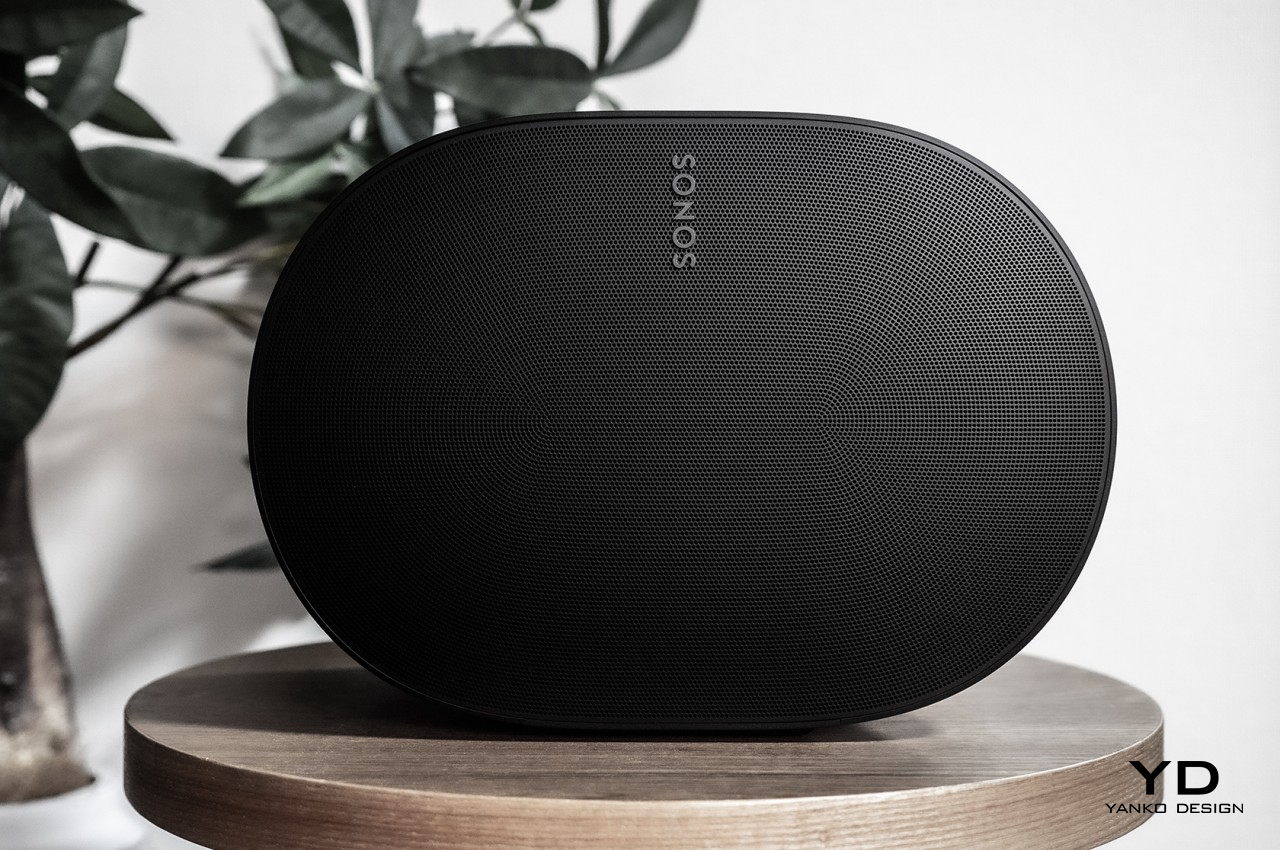
The shape that Sonos chose isn’t just for the sake of being visually different, though. For the designers, it’s the only shape that makes sense, given how the different drivers are arranged inside. There are two woofers, one on the left and the other on the right, and four tweeters facing up, forward, and sides. Their positions aren’t by accident, either, since each one has a specific role to play. The two woofers at the sides, for example, deliver powerful yet balanced bass, while the front-blasting tweeter takes care of vocals and high ranges. The tweeter at the top directs sound to the ceiling so that it would reflect back down to create a more believable spatial audio experience.
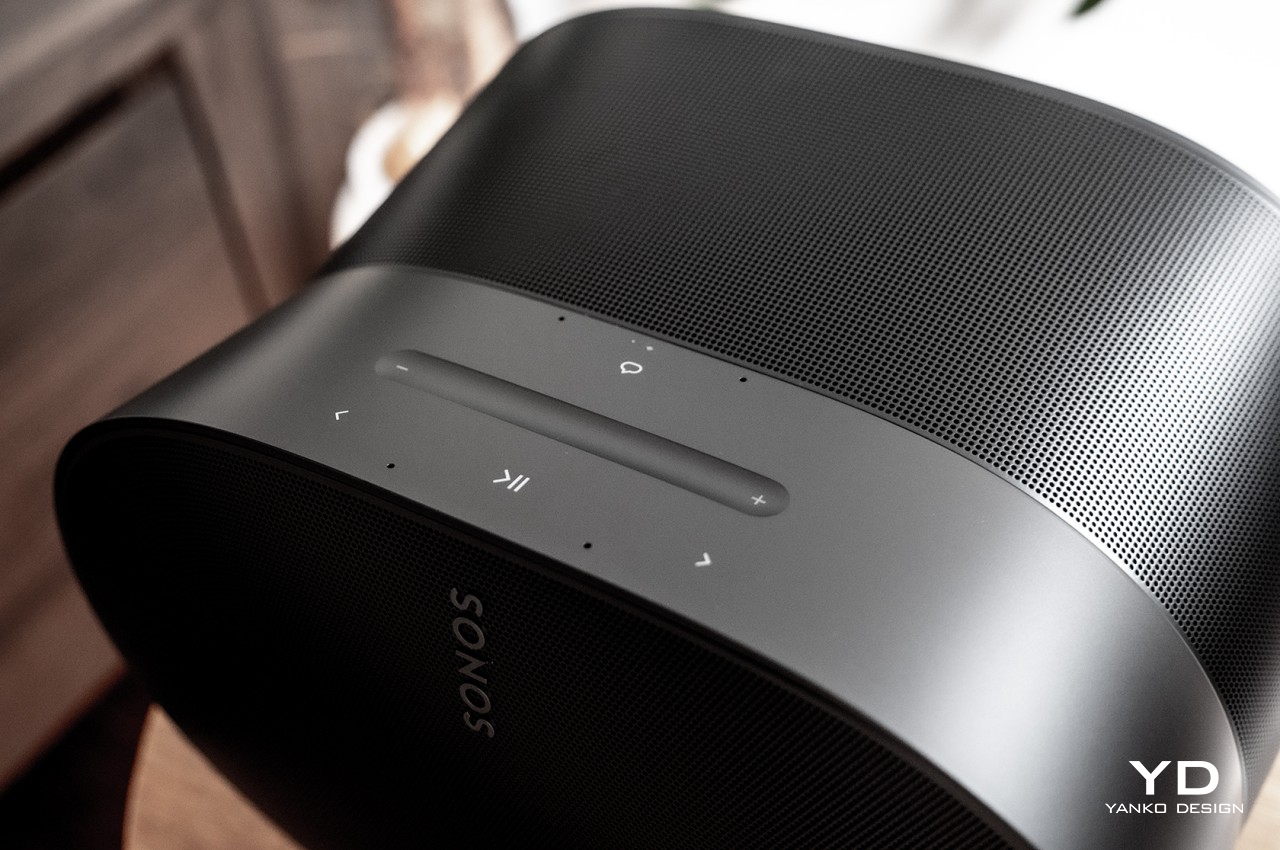
This extra-large Sonos speaker comes in black or white options, but it is the latter that has a more interesting story to tell. In line with its sustainability goals, the Era 300 uses 40% post-consumer recycled plastics, and those in the manufacturing industry know how the nature of the material can affect the final color. It’s difficult to hit the nearly pure white that some products have when using recycled plastics, so Sonos opted for a softer shade of white that happens to blend better with home interiors. Perhaps it’s time for the birth of a new “Responsible White” color.
It’s hard to argue that the Sonos Era 300 has a unique and quite memorable design that you won’t find on other speakers, though it’s debatable whether most will find it aesthetically pleasing. The best parts of its design, however, are the ones that you won’t see or even read about, like its sustainable design and innovative driver arrangement. Fortunately, those don’t detract from the speaker’s value as long as it actually sounds great.
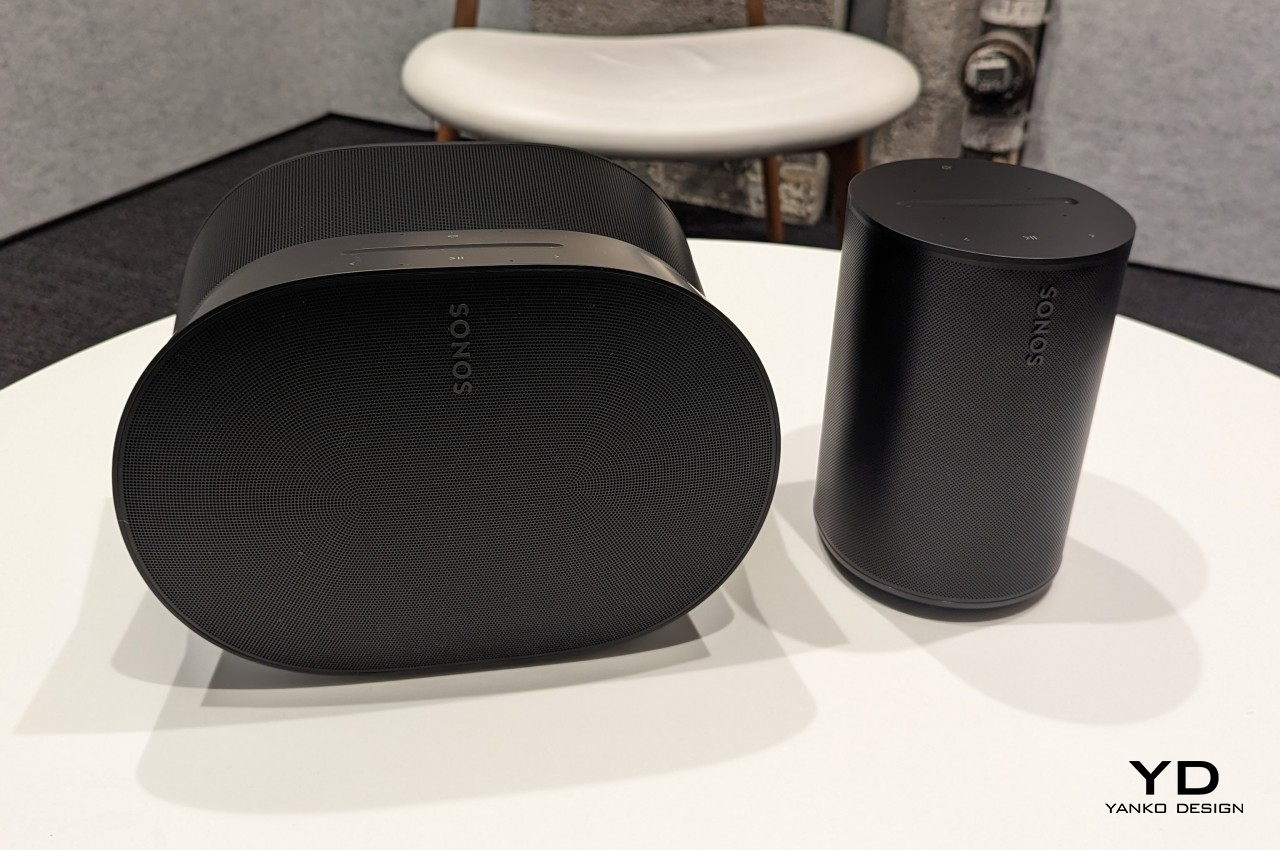
Ergonomics
The Era 300’s large size may be justified, but that doesn’t exactly make it less problematic. At 4.47kg, it’s not something you’d move around a lot anyway, but it does mean you’ll want plenty of space for it on a shelf or table. A better option would be to put it on a very minimalist stand built especially for the speaker, though that will send you back around $169 on top of the speaker’s price.
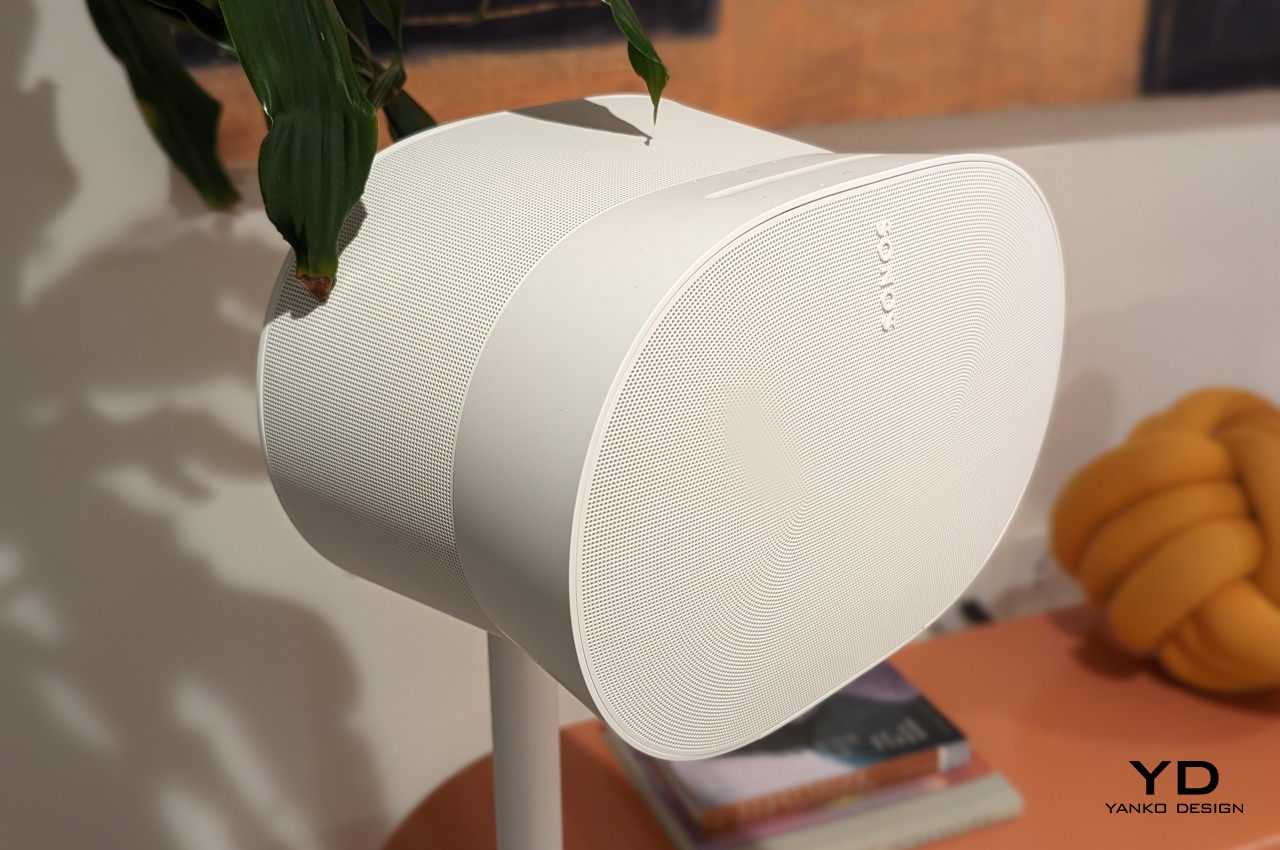
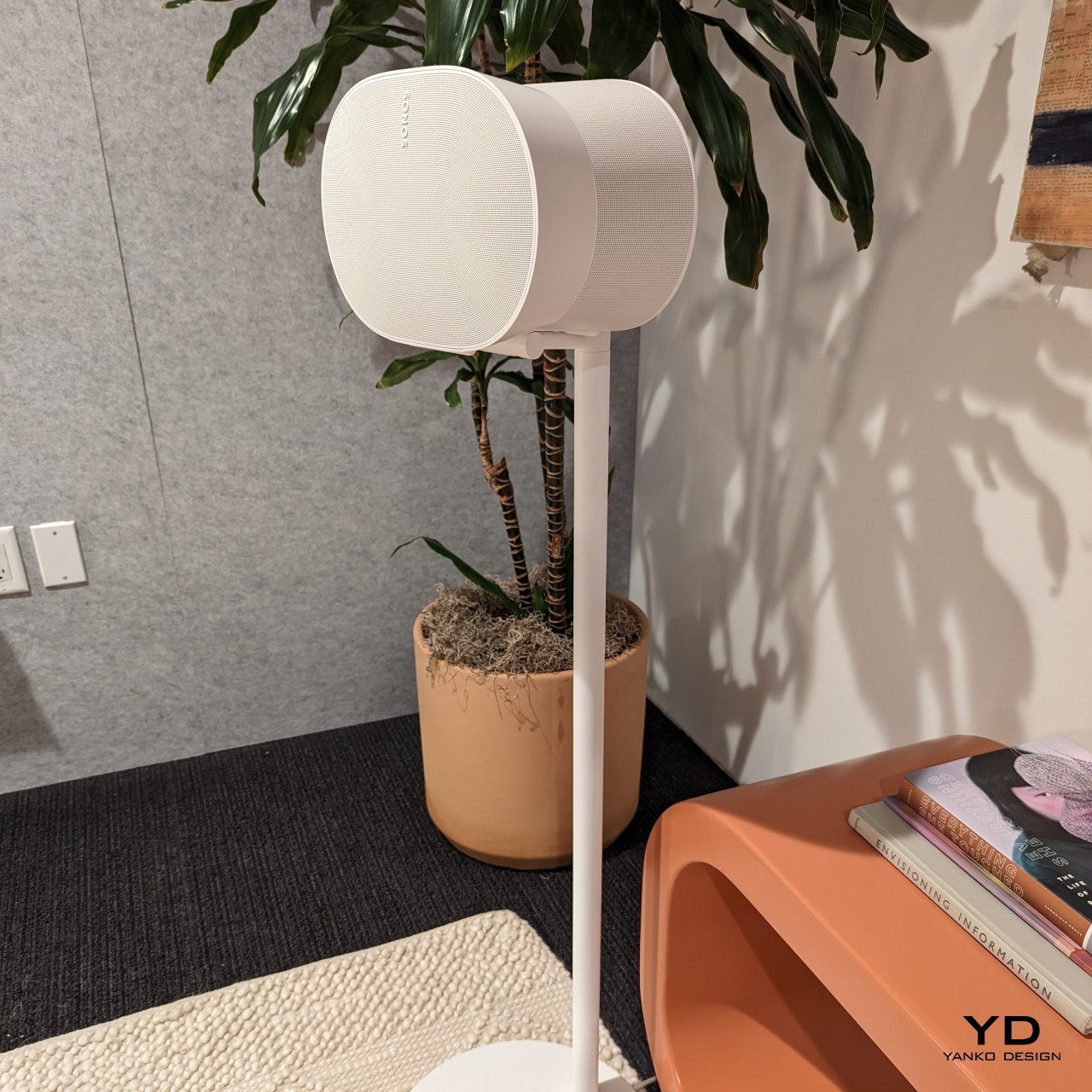
Fortunately, you won’t be juggling it around so much to use it because all of its most important functions are either on its top or accessible through a paired mobile device. There are capacitive touch controls for playing, pausing, and skipping tracks, as well as a groove made for adjusting the volume. There’s a speech bubble icon there as well for disabling the voice assistant temporarily, but if you’re really concerned about privacy, there’s a hardware switch on the speaker’s back to mute the mic.
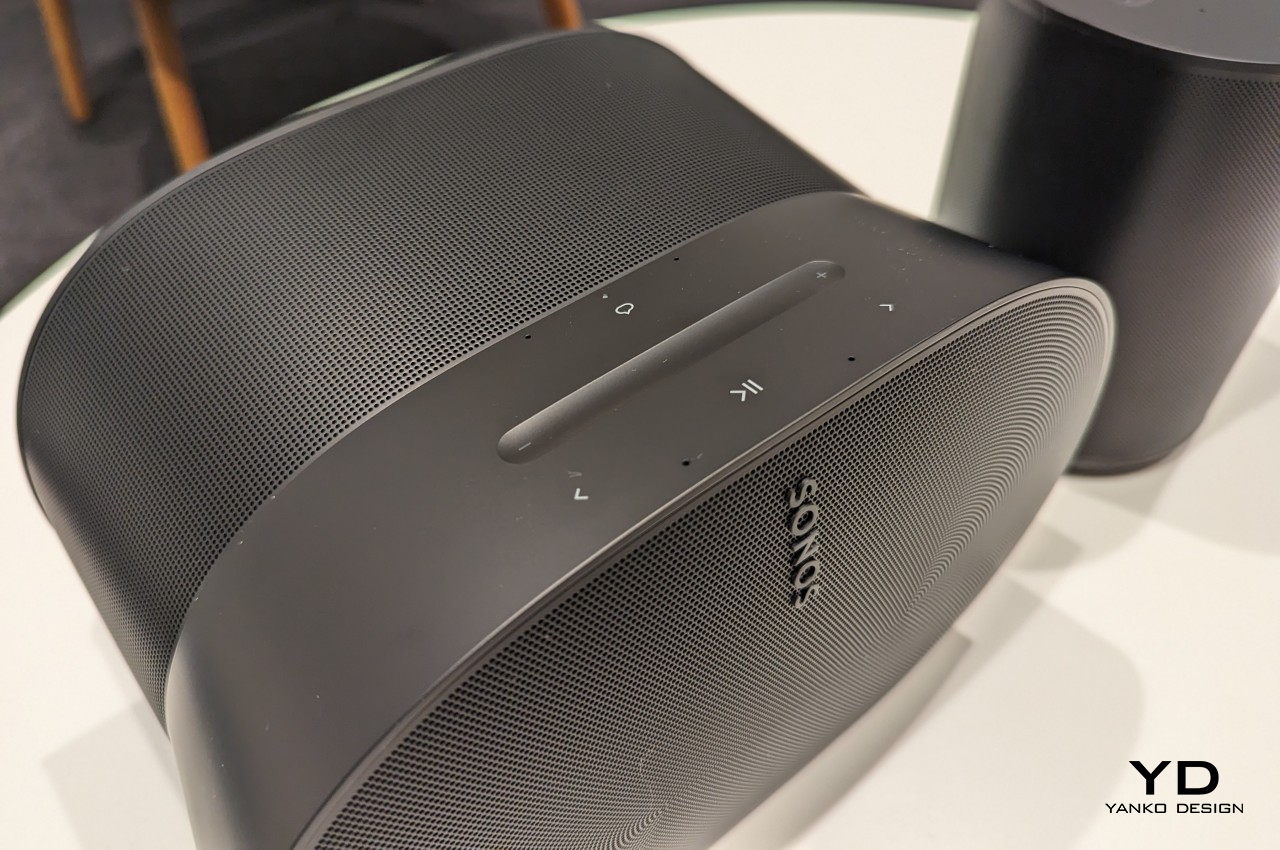
Setting up the Sonos Era 300 is just as easy. You just need to download the Sonos app on your phone, create or log into your Sonos account, and add the detected speaker there. You’ll need to connect the app with music streaming services if you’ll be using those as well, but the process will be pretty familiar to anyone who has handled Bluetooth speakers before. Sonos also has a special fine-tuning feature called Trueplay, where it can automatically change its settings depending on where it’s located in a room. It does so by listening to its own sound output using the built-in mic, which is as easy as just letting the app run the tests. For more accurate tuning, however, there’s an “advanced” manual mode that requires walking around the room with an iPhone or an iPad.
Performance
With no less than six drivers inside, you’d expect the Era 300 to sound fantastic. Fortunately, it doesn’t disappoint. The audio coming from the speaker is nothing short of phenomenal, with loud and full sound across the board and frequencies coming out clear and distinct. With how powerful the bass comes out, those not familiar with the Era 300’s specs might presume there’d be a subwoofer hidden somewhere. The angle of the drivers definitely creates that stereo effect, though the audio industry has started moving toward another direction when it comes to surround sound.

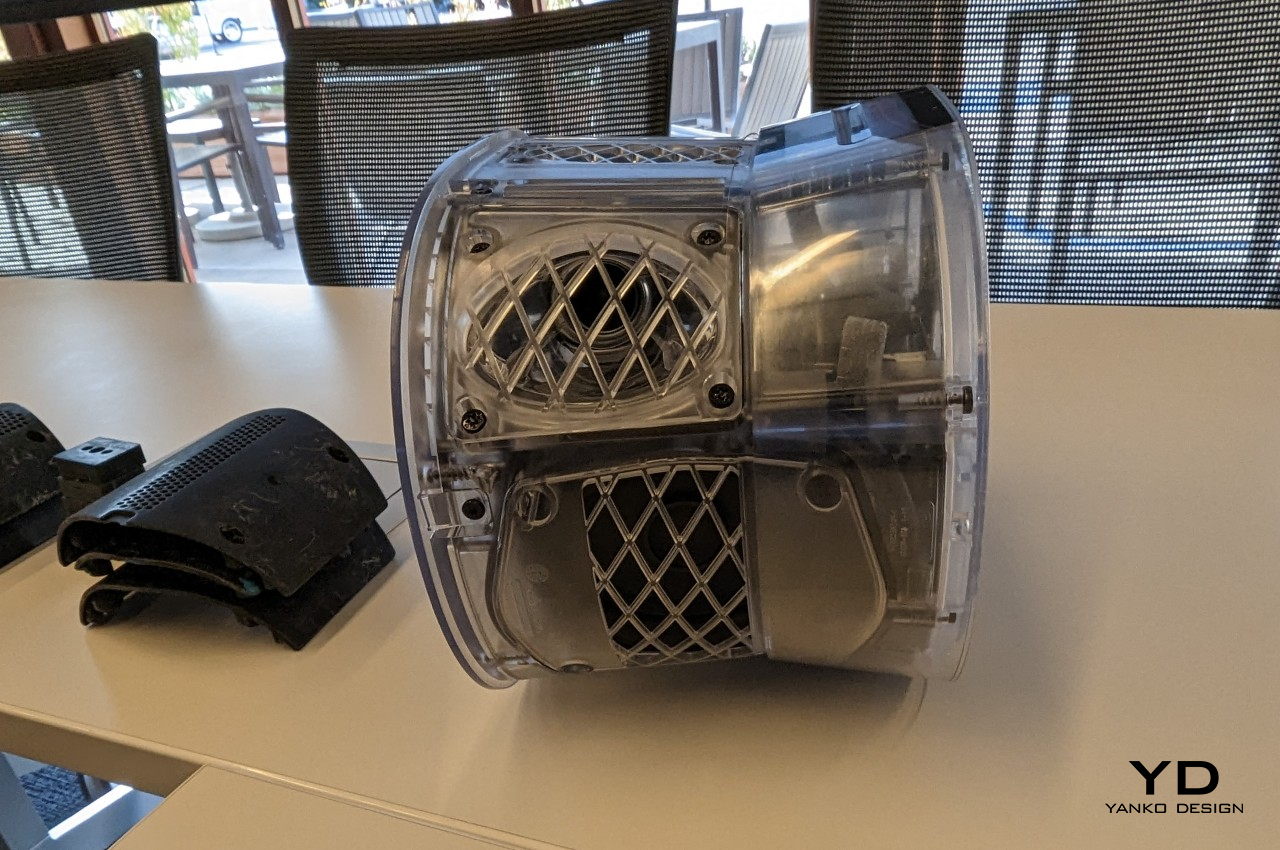
Spatial Audio is the new hype in the industry, promising a 3D surround sound experience without the multitude of speakers. It’s still in its infancy, but the who’s who of the market are jumping at the opportunity to blaze a trail, and Sonos is no different. In fact, you could say that Spatial Audio is the headlining feature of the Era 300, or at least it’s supposed to be. In practice, it sounds like one of the speaker’s very few flaws. The experience of Spatial Audio on this large audio equipment seems to be a hit or miss, depending on what you’re playing. Sometimes, the difference from the regular stereo version is as clear as night and day; other times, it might take a true audiophile to discern the nuances. There are even some cases where the Dolby Atmos Spatial Audio version sounds a little bit worse than the original because of the larger amount of reverb. This is especially true for music remastered to be compatible with Spatial Audio, and you will have better luck with newer pieces recorded with Spatial Audio in mind right from the start.
In short, the Sonos Era 300’s key feature seems to be its weakest, but that doesn’t erase the fact that it is still a strong and solid speaker without the Spatial Audio feature. The slightly good news is that there are still too few albums and services that offer Spatial Audio, so you can keep on enjoying quality sound from the Era 300. Unfortunately, that also means you might be paying for technology that you might be using most of the time anyway, which makes the cost of the speaker feel a little too steep.
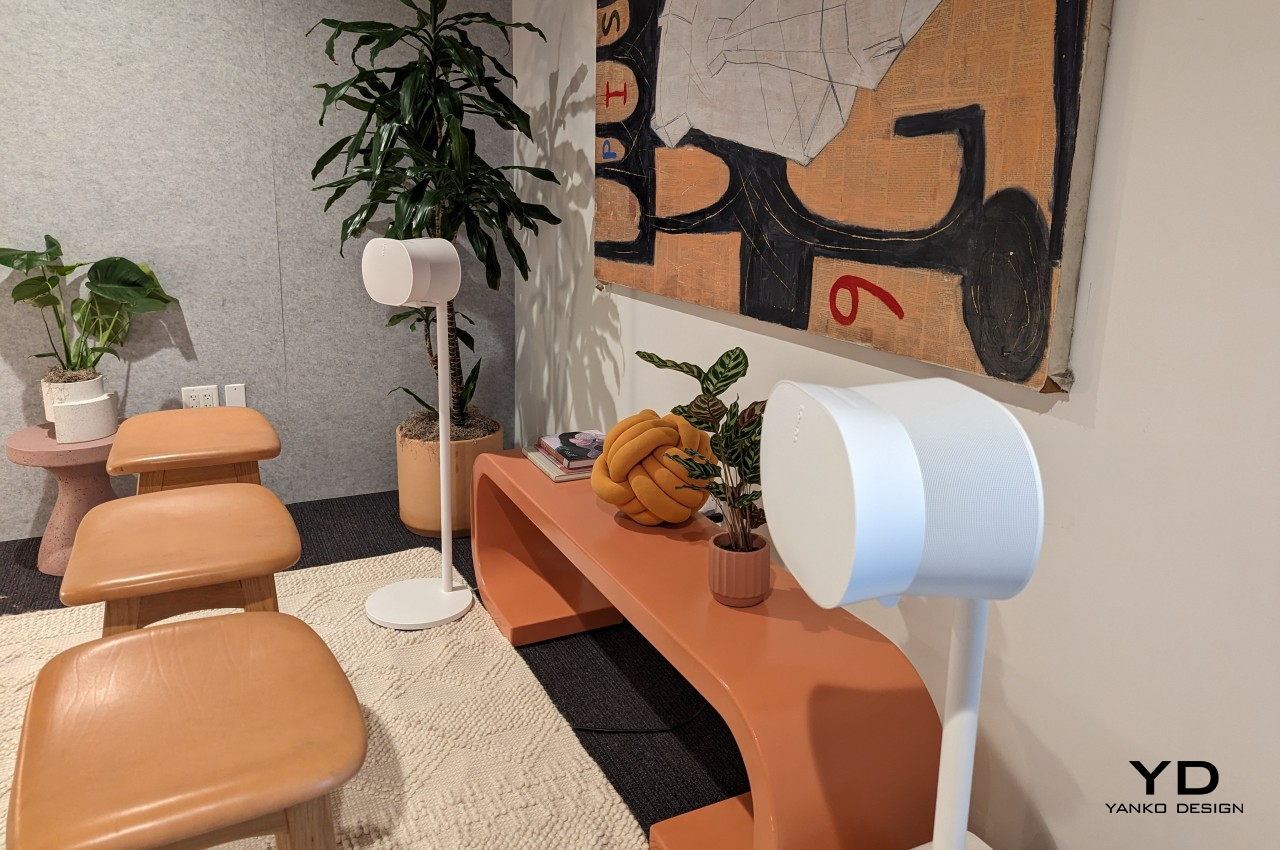
While the speaker is already powerful on its own, disregarding the Spatial Audio spiel, it can also be used in tandem with other Sonos products for an even more immersive listening experience. For example, pairing two Era 300 speakers will create an actual stereo speaker setup, though you won’t be able to control which is the left and which is the right. If you want a more traditional 7.1.4 surround sound setup, you can combine a Sonos Arc, two Sonos Era 100s in the front, and two Sonos Era 300s in the back, though that will definitely burn a hole through your wallet as well.
As a wireless speaker, the Era 300 has support for almost all possible sources, from streaming services to Bluetooth devices. As a smart speaker, you can control it using your voice via Amazon Alexa or the company’s own Sonos Voice Control. In the past, Sonos speakers supported Google Assistant as well, but recent events seem to have muddled relationships between the two. Sonos thankfully included options for wired connections, but you might have to spend extra for that capability. There is a single USB-C port on the back for external sources, but you will need a USB-C to Line-in Adapter if you want to connect a traditional 3.5mm jack. The speaker can also connect via Ethernet, but you will have to buy the Sonos Combo Adapter for that as well.
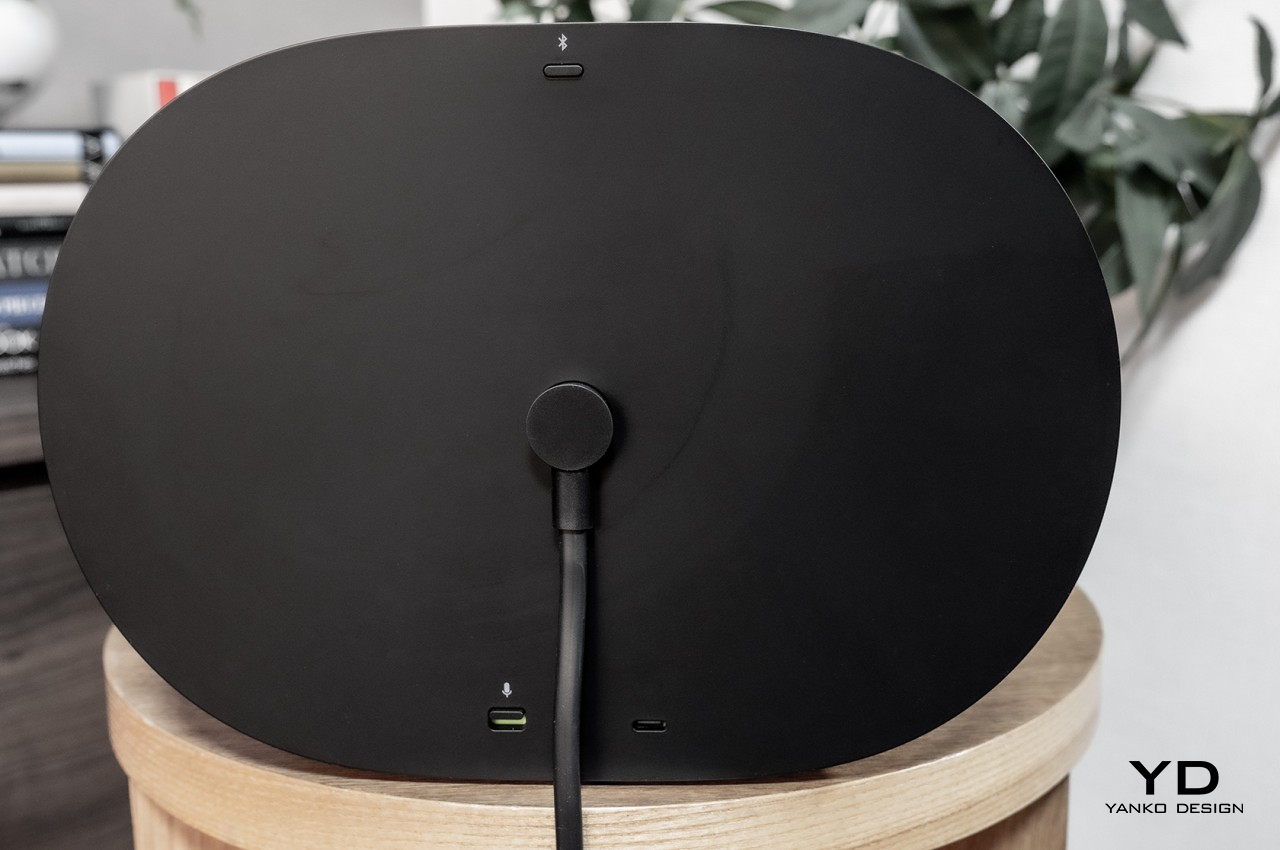
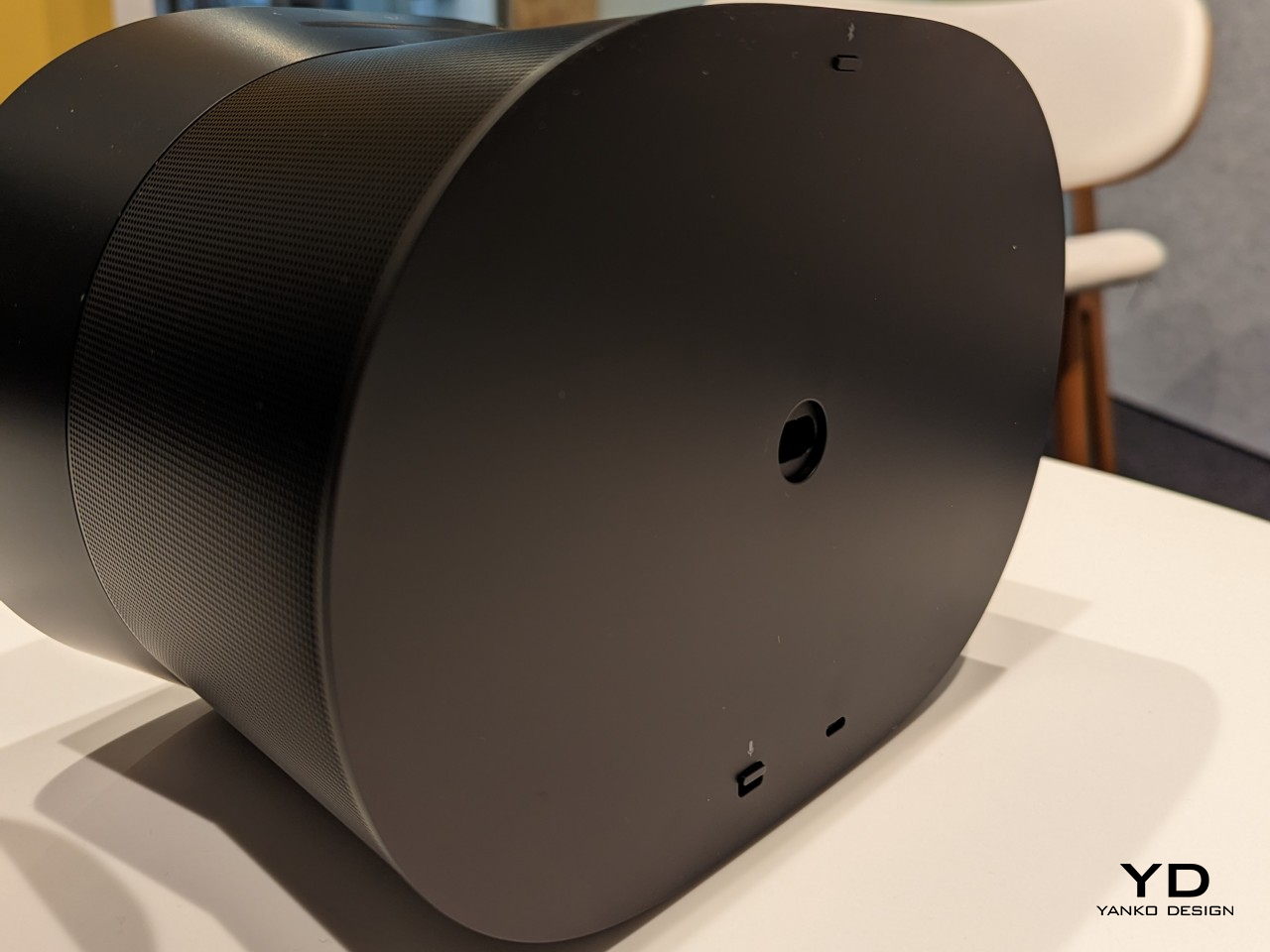
Sustainability
Spatial Audio might be the Era 300’s key feature, but its strongest point might be the one that buyers might never know about. More than just a revolutionary new look, the speaker represents Sonos’ strongest sustainability effort as well, and it goes beyond just using some recycled material. Of course, that’s important as well, and both black and white versions of the speaker use 40% post-consumer recycled plastics, which is still a large portion considering how few speakers today even use recycled plastics.
Sonos, however, is taking a more holistic approach to sustainability, going beyond manufacturing and shipping and stepping into the “use phase” when the speakers are already in consumers’ hands. The company takes into account the greenhouse gas emissions generated by using the speaker itself, especially when they’re left on standby. To help reduce that figure, the Sonos Era 300 and its smaller sibling, the Era 100, use less than two watts of power when idle.
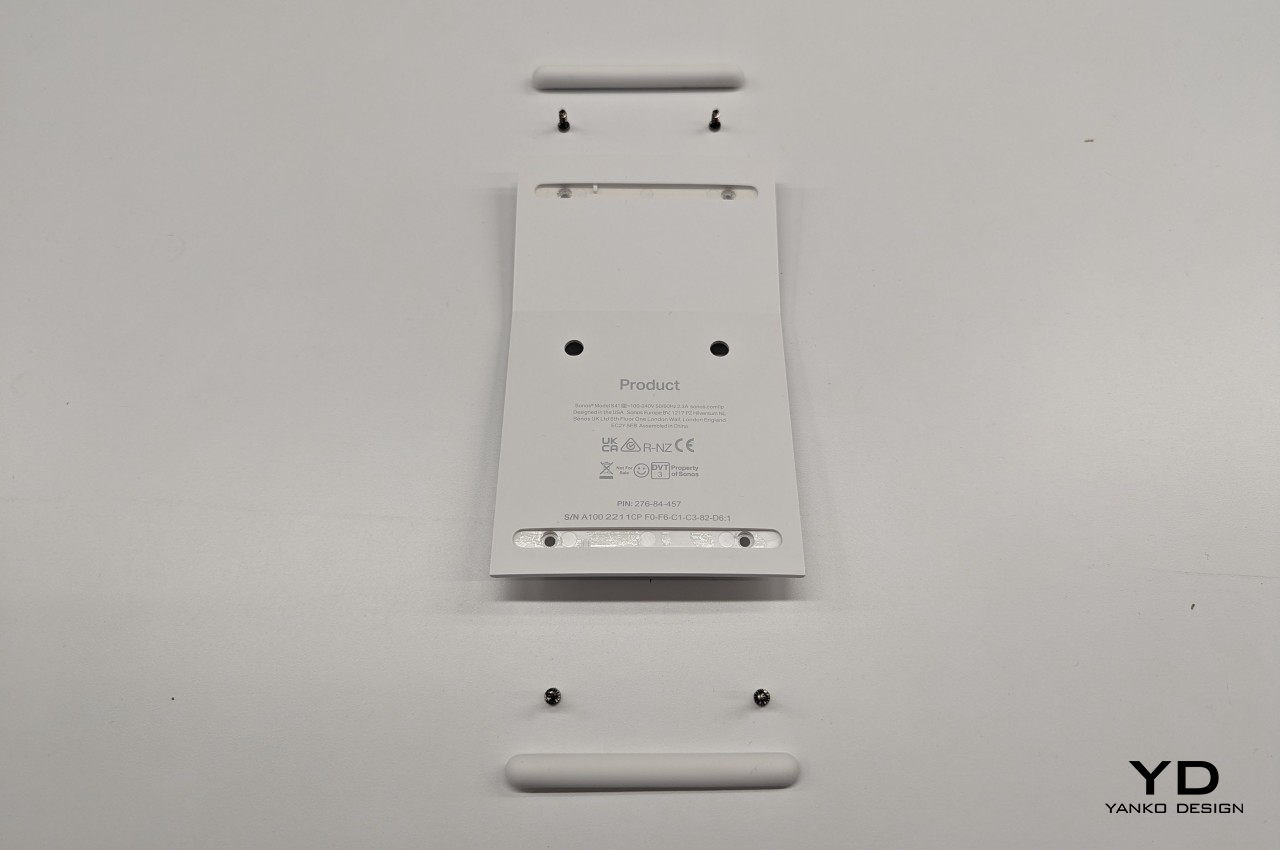
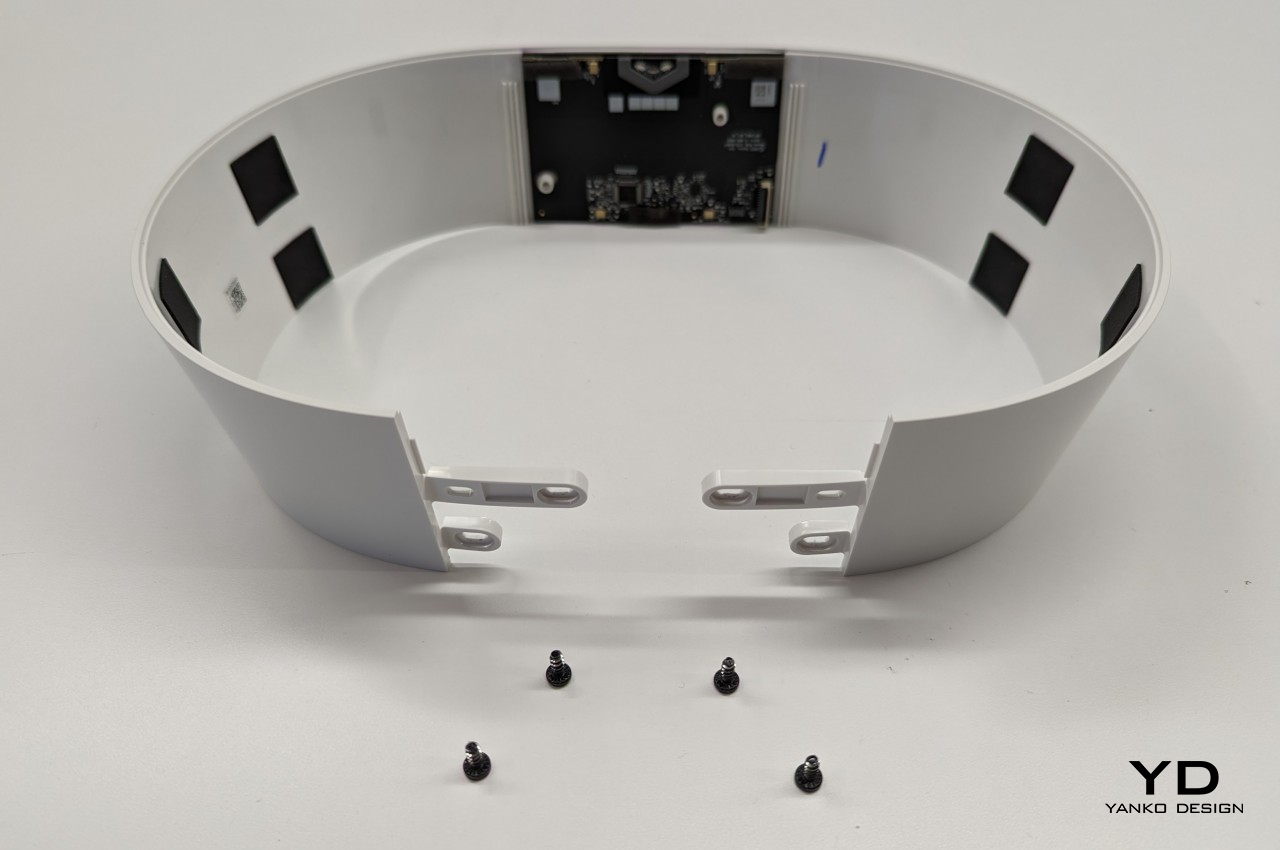
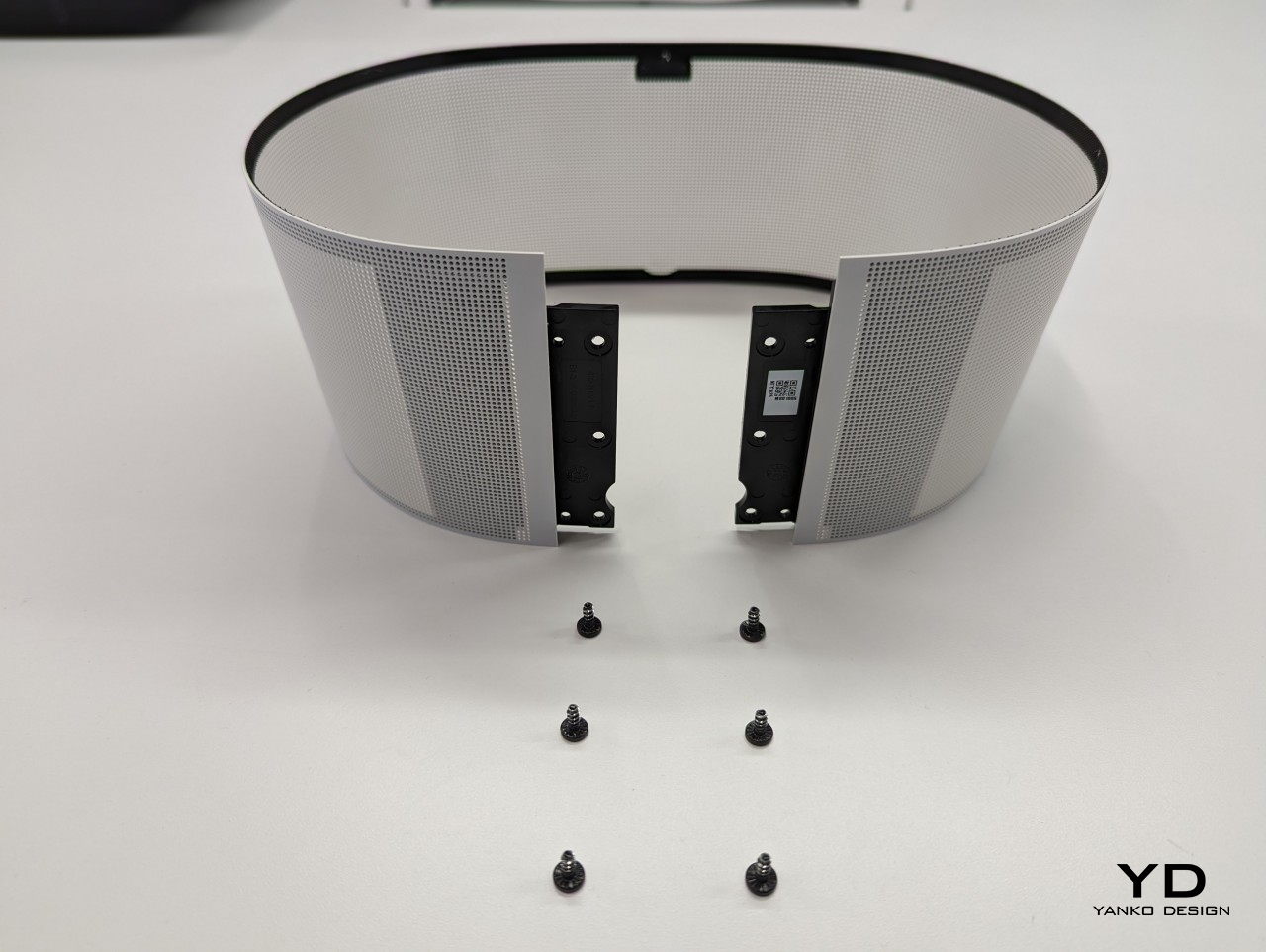
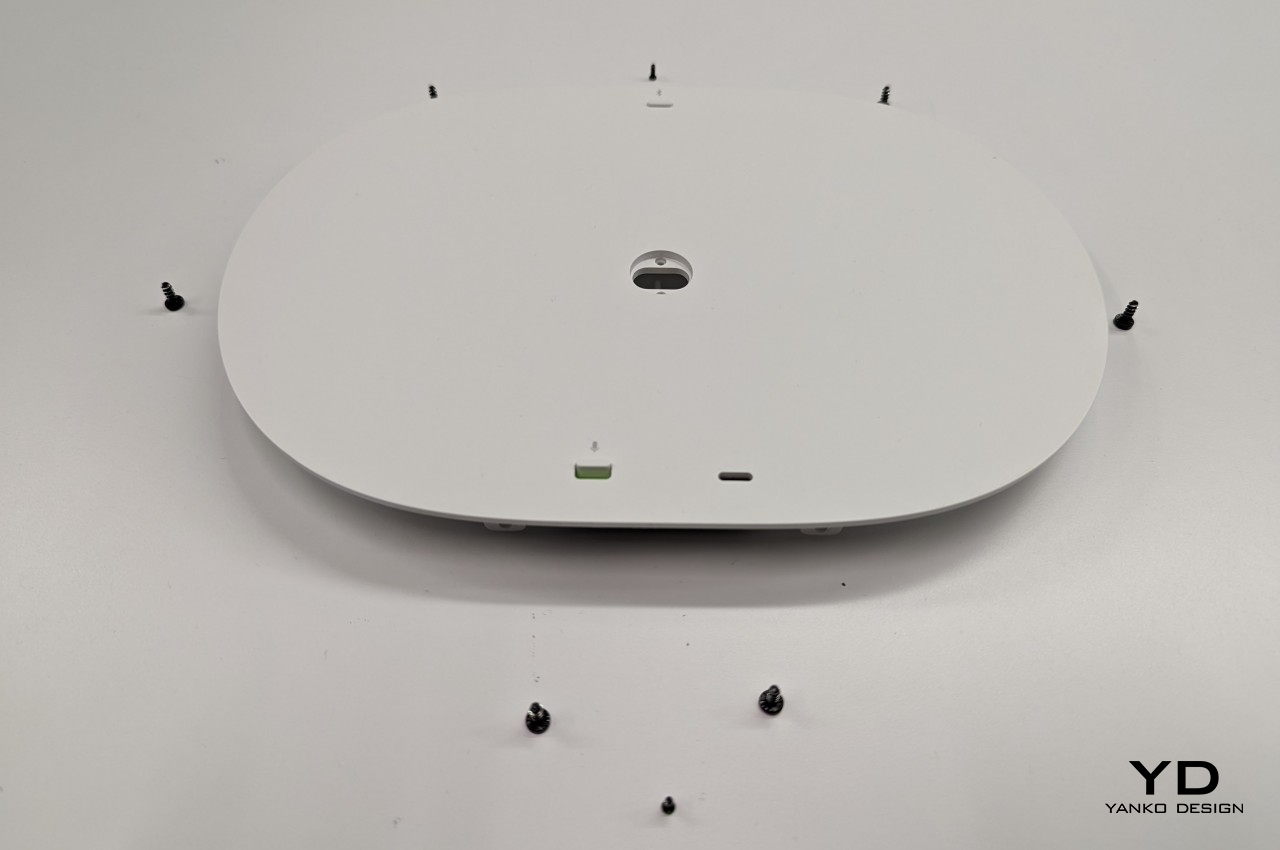
The very structure of the speaker itself was made with longevity in mind, even if you can’t easily repair the speaker yourself. The speaker was made to be easily disassembled at the end of its life so that parts can be quickly sorted and reused or recycled if possible. The Era 300’s grill uses velcro to attach to the system rather than being bonded to the frame directly. This would make repairs by authorized service providers a bit easier while also making it more convenient to refurbish speakers for sale later on.
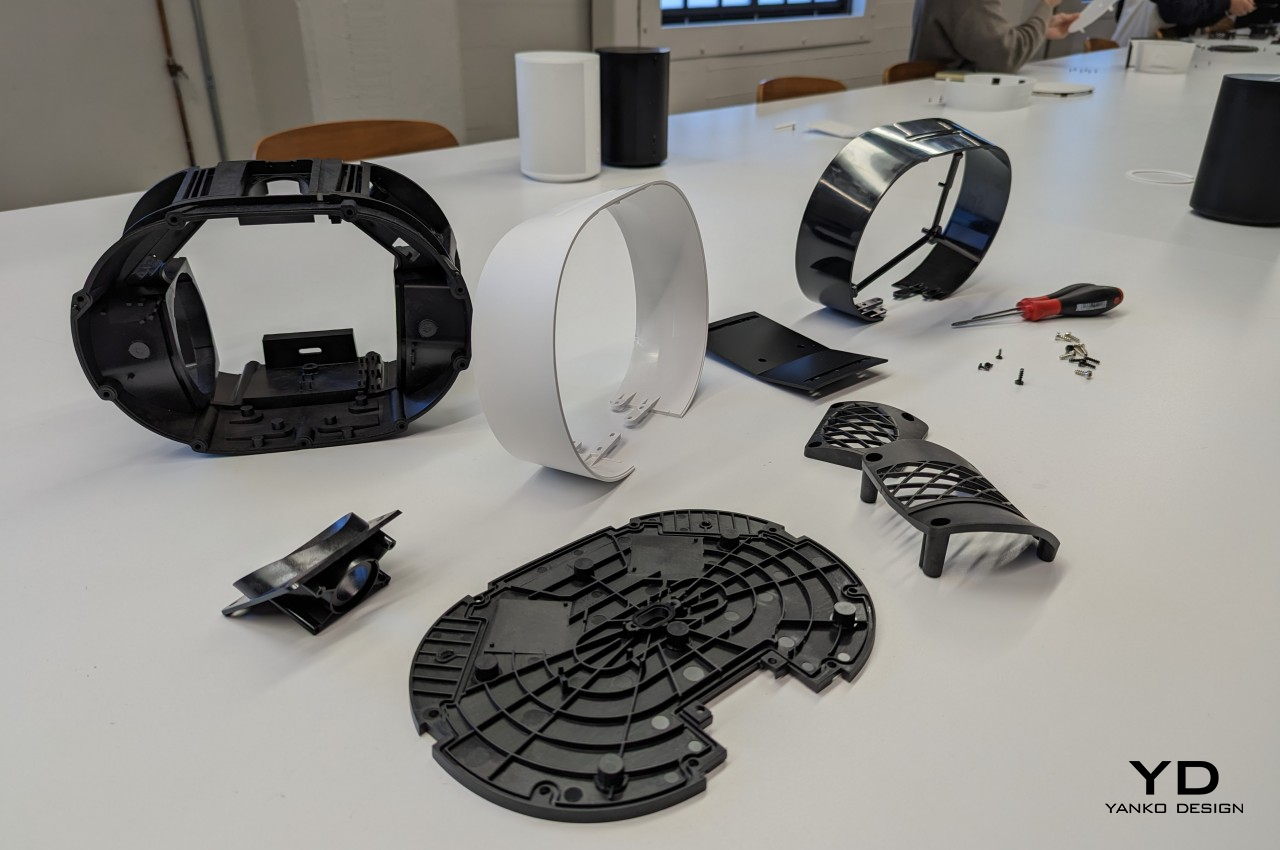
And, of course, there’s the packaging, which uses 100% recyclable materials. Such materials often get a lot of flak for their durability, but Sonos has ensured that not only is the Era 300’s box more long-lasting, but that it also looks and feels as premium as the speaker that’s lying inside. There are plenty of smart speakers littering the market today, but only the new Sonos Era speakers can proudly claim they’re designed not to litter the planet.
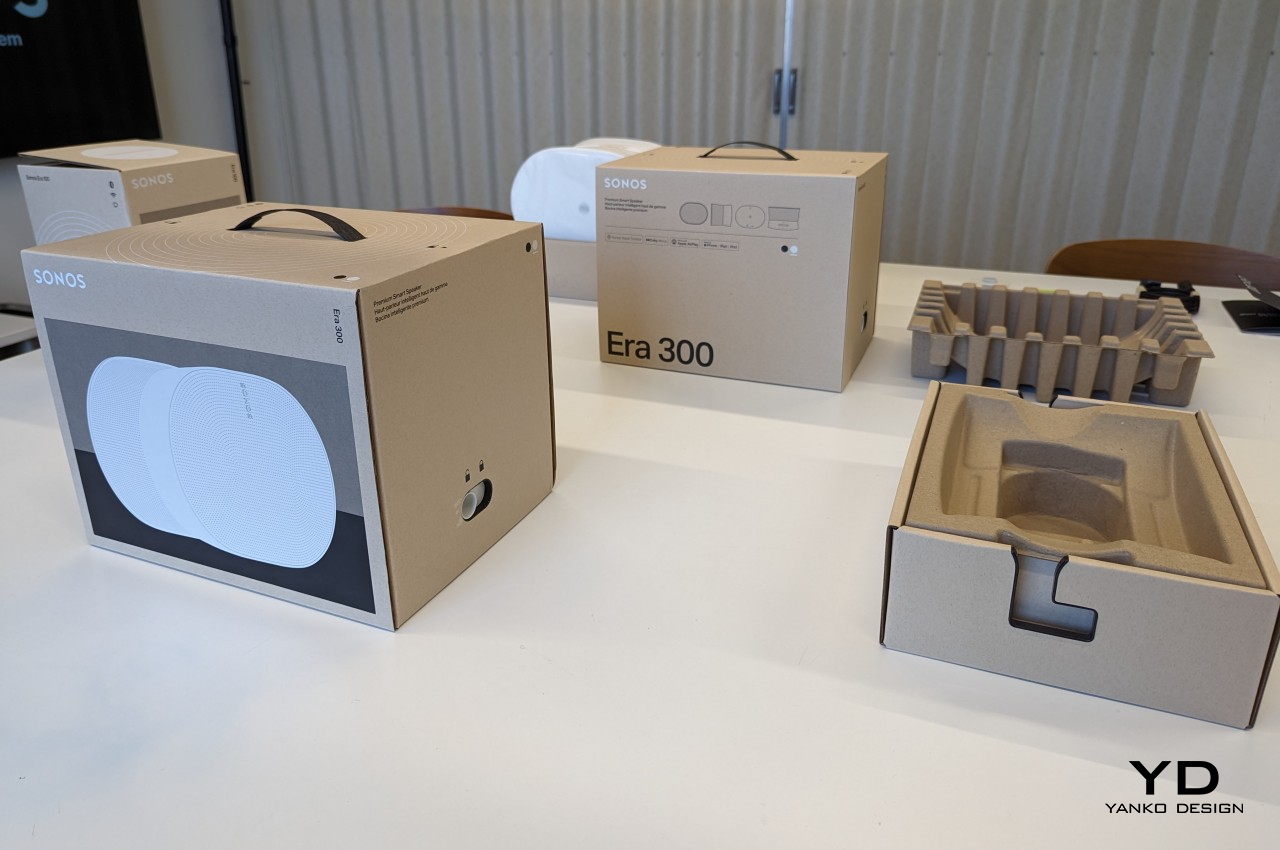
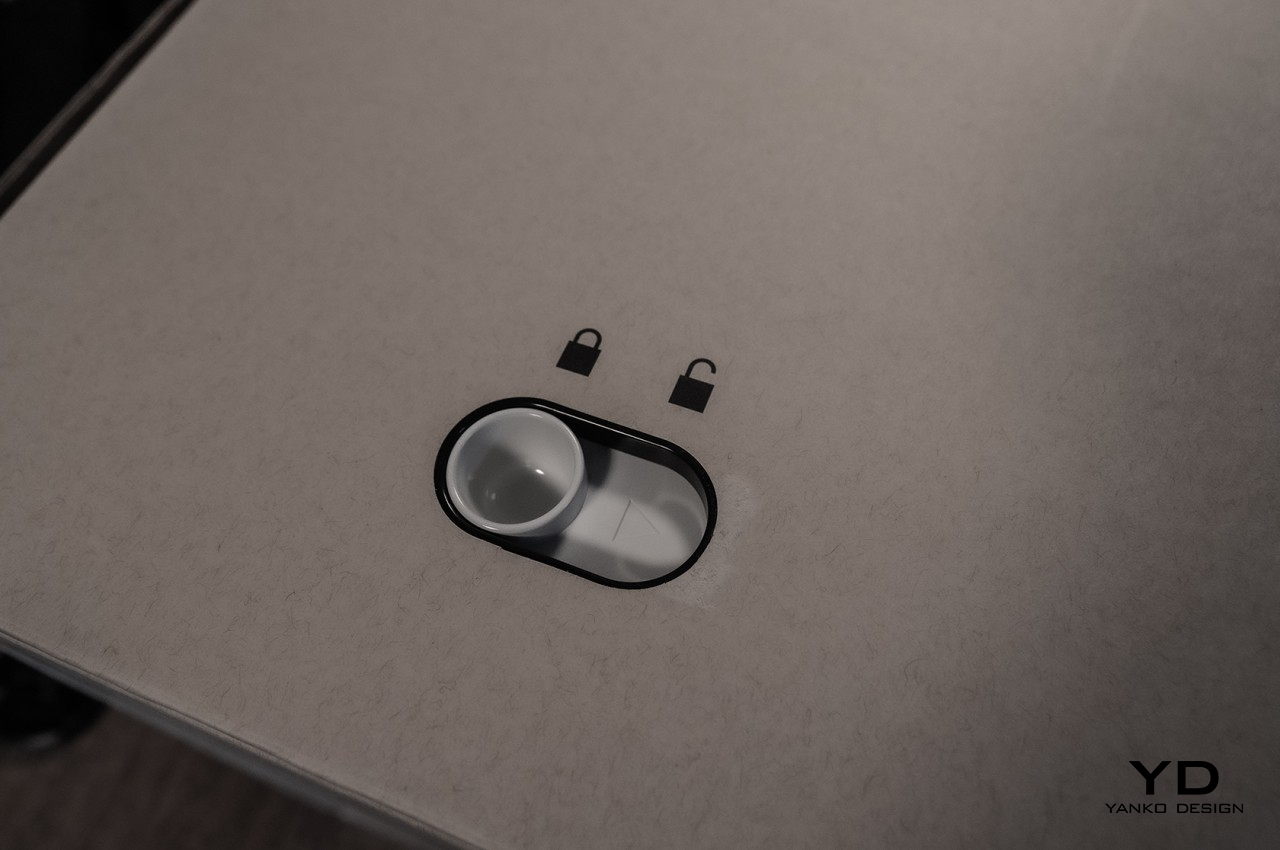

Value
Getting straight to the point, the Sonos Era 300 is one expensive piece of audio equipment, though it’s not the company’s priciest product either. At $450, it sits well below the Sonos Five, which has been hailed as the speaker to beat in this family. At the same time, however, you can have two $250 Sonos Era 100 speakers to create a true stereo setup for just a little bit more. It’s always a matter of balancing the pros and cons, and, unfortunately, the scales tip slightly against the Era 300 in this aspect.
Make no mistake; the Sonos Era 300 is an excellent speaker, producing solid audio that can embrace you in rich tones on all frequencies. Its key feature, however, is Spatial Audio, and it’s the one area where the speaker doesn’t put its best foot forward, not for the lack of trying. When you consider that there are two other speakers that support this technology at half the price, you might easily feel that the Era 300 is a tad overpriced. That said, this is also Sonos’ most sustainable speaker yet, and a purchase of the Era 300 could also be seen as a sign of support for this effort.

Verdict
For years, audio engineers and musicians have been trying to find ways to recreate how we naturally hear sounds but using as few speakers as possible. The latest technology to attempt that is being marketed as Spatial Audio, and the Sonos Era 300 is one of the extremely few wireless speakers that try to deliver that to music lovers and audiophiles. That technology is still in its infancy, and it definitely shows in the inconsistent performance of the speaker, depending on the kind of music and how it was made to embrace Spatial Audio.
If you manage to overlook this one major flaw and its high price tag, the Sonos Era 300 definitely meets the expectations of a powerful, high-quality stereo speaker. Its unique design is definitely eye-catching, and its ease of use is a breath of fresh air in the midst of advanced but complicated smart speakers. Sonos definitely deserves kudos for its sustainability efforts that cover manufacturing, packaging, and even “use phase” emissions. It is definitely a solid performer, which justifies the costs a little bit. It just might be ahead of its time, given how the world isn’t completely prepared for Spatial Audio just yet.
